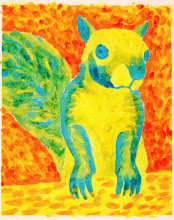
Temple University's GenEd department held a contest in October that was open to all the students. I entered this contest, and then later in computer class I found out that we were going to be given an assignment specifically so we could work on a piece that could fit this contest. This was great because it gave me more time to work on my entry.
The contest was to create a post on the contest's online discussion board that reflected both the "grit and beauty" of Philadelphia. We could use written words, images, videos, or anything else submitted in digital form.
I chose to make a post about all the dead birds I find on Temple's campus. Most of them die from hitting the glass windows of large new buildings such as the Tech Center, Alter Hall, and the Tyler building. These new buildings have huge panes of glass and mirror type surfaces. It makes the buildings very beautiful, but also deadly to birds who don't know that its a sheet of glass. I've been counting the birds I find as well. So far I've found over fifty. Most are small green and yellow warblers like the one I used in my entry image. They are migrating through the area in the fall.
This interaction between the birds and the glass is gritty because there is death and the urban environment directly involved. At the same time, both the buildings and the birds are visually beautiful. The birds are so pristine when they just fall to the sidewalk, that they look like they could be alive. I wanted to capture this quality in my image. I used bright colors and one of the birds I found outside the Tyler building. Hopefully with closer inspection, the viewer can see the "gritty" side of both the image and the new city buildings.
This is a digital image I made in photoshop. In my contest entry, I also wrote a little to explain why I made this image.











